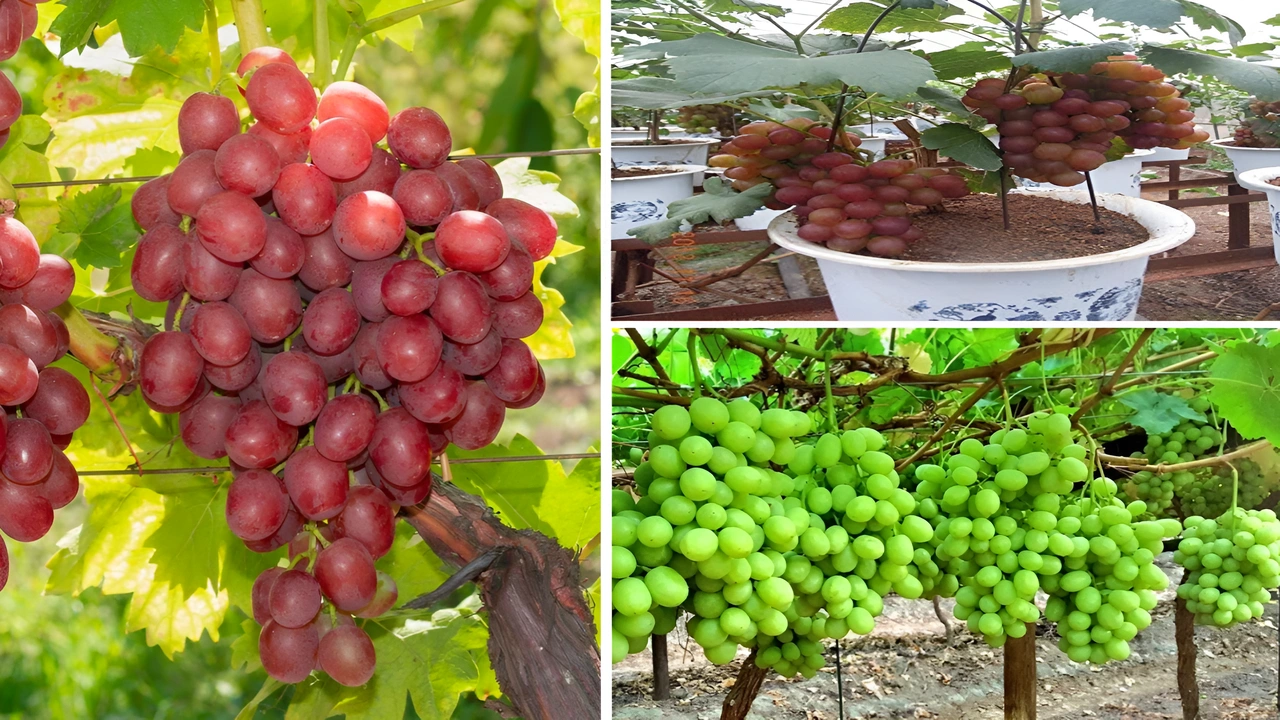Join on WhatsApp
Get the latest updates directly on WhatsApp – motivation, news & more!
Growing grapes at home might sound like a countryside luxury, but you don’t need a sprawling vineyard to enjoy sweet, homegrown grapes. Whether you have a cozy patio, a small backyard, or even a sunlit balcony, you can cultivate grapevines with just a bit of planning and care. Grapes are surprisingly adaptable and, once established, are generous producers of fruit. This guide walks you through everything you need to know—from choosing the right variety to harvesting your first juicy bunches.
Picking the Right Grape Variety
The success of your grape-growing journey starts with the variety you choose. Grapes come in two main types: table grapes, which are meant for fresh eating, and wine grapes, which are ideal for juicing or fermentation. For home gardens, table grapes like ‘Concord’, ‘Thompson Seedless’, and ‘Reliance’ are popular choices because of their flavor, ease of growth, and disease resistance.
If you’re in a colder region, look for cold-hardy varieties such as ‘Mars’ or ‘Valiant’. In warmer zones, ‘Flame Seedless’ or ‘Black Monukka’ can thrive with plenty of sun. Consider how much space you have—grapevines need room to climb—and be sure to pick varieties suited to your local climate and growing zone.
Choosing the Best Spot
Grapes are sun lovers. To produce fruit, they need at least 6–8 hours of direct sunlight each day. Look for a spot that gets morning to afternoon sun and is sheltered from strong winds. Grapes also do well near walls or fences that reflect warmth and offer some protection.
If you’re planting in a small patio or backyard, use vertical space wisely. Grapevines are natural climbers and do best when supported by a trellis, arbor, or fence. Even a sturdy balcony railing can work in a pinch.
Growing Grapes in Containers or Raised Beds
While grapes traditionally grow in open ground, they can absolutely thrive in containers if given the right conditions. Choose a large pot—at least 15–20 gallons in size—to allow room for root development. Ensure the container has proper drainage holes to prevent soggy soil.
Use a high-quality potting mix blended with compost. Grapes prefer slightly acidic to neutral soil (pH around 6.0–6.5). Mix in some perlite or coarse sand for improved drainage, especially in containers where soil tends to compact over time.
Raised beds are another excellent option for small backyards. They give better control over soil quality and moisture levels, which is essential during the first couple of years when the plant is getting established.
Planting the Vines
Grapevines are usually sold as dormant bare-root plants or small potted vines. Early spring, after the danger of frost has passed, is the best time to plant.
Dig a hole that’s twice as wide as the root ball and just deep enough to cover the roots. Spread the roots gently and cover them with soil, making sure the crown (where the roots meet the stem) sits just at or slightly above soil level. Water thoroughly after planting and add a layer of mulch to retain moisture and suppress weeds.
Training Your Grapevines
Grapes need strong, consistent support as they grow. You can train them onto a trellis, pergola, fence, or even an overhead wire system depending on your space. As they grow, guide the main shoot upward and tie it loosely to the support structure.
Training isn’t just about keeping vines tidy—it’s also key to improving airflow, reducing disease, and maximizing fruit production. Over time, your grapevine will develop a woody trunk, and each year, new fruiting canes will grow from it.
Watering and Feeding
Grapes don’t like wet feet, so be careful not to overwater. During the growing season, keep the soil evenly moist, especially in containers where soil can dry out quickly. Reduce watering in fall as the plant begins to go dormant.
Fertilize in early spring with a balanced fertilizer (like 10-10-10), or use compost and organic matter to feed the soil naturally. Avoid high-nitrogen fertilizers, which can promote leafy growth at the expense of fruit.
Pruning for Productivity
Pruning is one of the most important tasks in grape growing. In fact, many beginners under-prune, which leads to tangled, unproductive vines. Grapes fruit on one-year-old wood, so annual pruning helps maintain a balance between old and new growth.
Each winter, once the plant is dormant, cut back most of the previous year’s growth, leaving just a few healthy canes. These will produce fruit in the next growing season. During summer, you can pinch back new shoots to manage shape and airflow.
Dealing with Pests and Disease
Grapevines are hardy, but they aren’t immune to trouble. Common pests include aphids, Japanese beetles, and grape leafhoppers. Fungal diseases like powdery mildew or black rot can also show up, especially in humid conditions.
Prevention is key. Provide good air circulation by spacing vines well and pruning regularly. Avoid wetting the leaves when watering. Use neem oil or insecticidal soap for mild infestations, and remove any affected leaves to stop the spread of disease.
Winter Protection
In colder zones, grapes need a little help to survive winter, especially young vines or those in containers. Apply a thick mulch layer around the base of the vine to insulate roots. If you’re growing grapes in pots, move them to a sheltered area or wrap the container with burlap or insulation fabric.
Most grape varieties go dormant in winter and bounce back vigorously in spring. Just be patient—first-year vines may not produce fruit, but by the second or third year, you’ll likely see clusters forming.
Harvesting Your Grapes
Harvest time depends on your grape variety, but most grapes ripen from late summer to early fall. The best way to know if they’re ready? Taste them. Grapes don’t ripen after picking, so leave them on the vine until they’re sweet and juicy.
Use scissors or pruners to cut the entire cluster rather than pulling the fruit, which can damage the vine. Store grapes in the fridge if you don’t plan to eat them immediately, or consider drying, juicing, or even making small-batch wine if you have a surplus.
Enjoying the Fruits of Your Patio Vineyard
Growing grapes at home isn’t just about the harvest—it’s a whole experience. From training the vines to watching fruit clusters swell in the sun, there’s something deeply satisfying about it. Plus, grapevines add a romantic, Mediterranean vibe to patios and garden spaces.
Whether you want a leafy pergola draped with grapes or a few productive vines in containers, it’s absolutely possible to enjoy a backyard vineyard without needing acres of land. With care, patience, and a bit of sun, you’ll be snacking on homegrown grapes—and maybe even sharing them with friends—before you know it.




